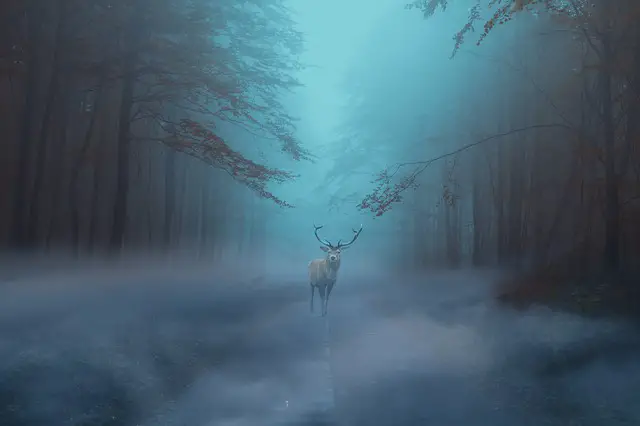Do deer move in the fog? Usually, they do not. They move based on their sense of smell, and do not pay much attention to the temperature or barometric pressure. If the temperature is high, deer are unlikely to move in the fog. Fog is a natural phenomenon. This fog forms when a moist, cool air mass moves under warm air. Drivers need to slow down when driving in fog to react safely.
Whitetail deer rely on their sense of smell to move
The whitetail deer’s ability to move in the fog depends on its remarkable sense of smell. Its heightened sensitivity to scent allows it to detect changes in barometric pressure and see everything in front of it, even in the thickest fog. As a result, they tend to move faster during unsettled weather, but they will wait until conditions return to normal before moving again.
Deer use their sense of smell as their No. 1 defense against immediate predation. Light rain can wash away human scent and damp conditions aid their olfactory sense. A steady fall rain helps wash away human scents from the air and dampened conditions encourage deer to eat. Although many hunters think deer will not move during rainy conditions, this is not the case. Light rain can only increase their activity level and does not hinder their movement.
They don’t care about wind direction
Whether or not deer care about wind direction in the fog is a common question hunters ask. Most hunters have a good idea when deer are likely to move, but the presence of fog makes this task difficult. In light or heavy fog, deer will move and will only do so if they feel safe and are able to safely travel to the food source. Deer tend to move in different directions depending on their temperature.
Wind direction affects deer in two ways: indirectly, it influences their movement, and directly, it affects their food and shelter choices. Whitetails on the Mexican border do not like winds greater than 20 mph, whereas deer in the prairies of Saskatchewan seem to be more tolerant of high winds. However, deer in southern states do not favor the “less is more” philosophy, and do best in areas with light, fresh breezes. Similarly, in South Texas, deer do not like gusty, direction-changing breezes.
They don’t care about barometric pressure
The barometric pressure in the fog isn’t as important for deer as hunters may think. Although barometric pressure is a key factor in weather, hunters shouldn’t depend solely on it. A recent study from Mississippi State University found that deer were most active in the dawn and dusk. The researchers used a computer to track the barometric pressure of the surrounding area.
Although deer aren’t able to detect barometric pressure, they can sense the temperature of the air. When the barometric pressure is low, deer begin to move to cover. When the pressure drops rapidly, deer start to move. However, this behavior is not consistent and may vary from one season to the next. The same goes for fog and rain. When the barometric pressure is low, whitetails head for thick cover.
They don’t care about temperature
In the fog, deer are less likely to move, since the air is cool and humid. But they still move around and have a keen sense of smell. The best time to look for deer is during dawn and dusk, when the temperature is cooler. Fog usually lifts after a few hours, so you can react safely. If the fog is persistent and you are out on a windy day, you can stop for a few minutes and watch for deer.
The temperature and humidity of the area can also be affected by the fog. If the fog is too thick, deer will believe that it’s still night and therefore remain low-moving. They will then begin to lay down. The temperature of the area also affects deer’s activity levels. Deer will be more active during the early morning hours and less active during the daytime when the fog is thick.


